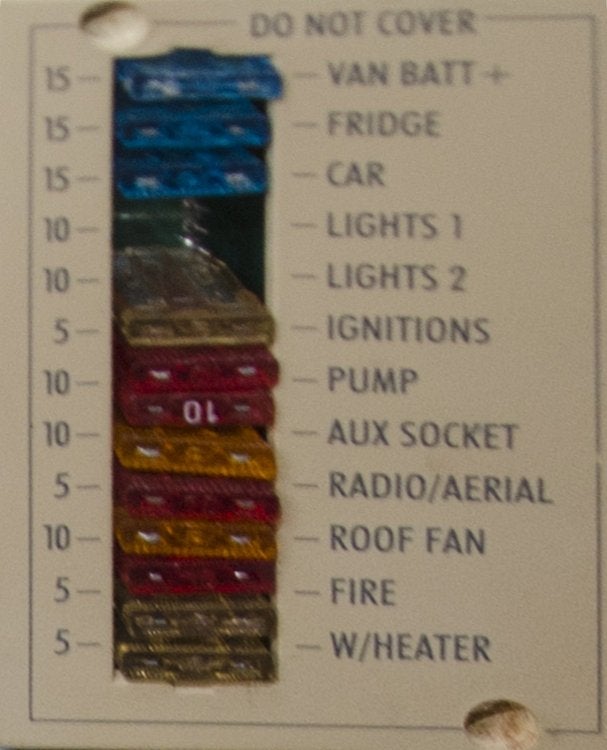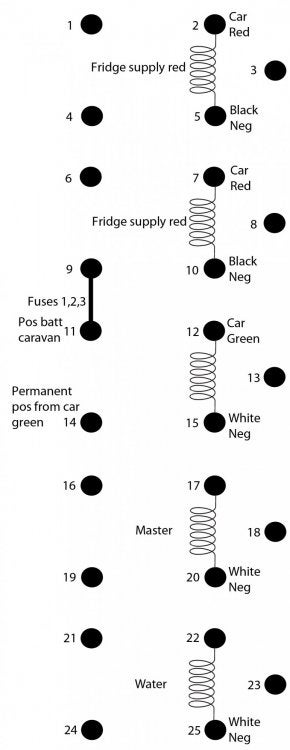- Joined
- 27 Jan 2008
- Messages
- 27,409
- Reaction score
- 3,310
- Location
- Llanfair Caereinion, Nr Welshpool
- Country

There is a relay/fuse box with 5 relays and 14 fuses even spread and 12 names even spread so names are useless. One relay seems to do water pump, one main isolator, one switches from caravan to car battery when car plugged in and it seems two switch over when car ignition is switched on.
One fuse is only live when car plugged in, and the one labelled ignition seems to work lights. I found two in line fuses by passing the fuse box so the master switch did nothing, and the lights did not swap between car and caravan supply, plus the caravan battery was not charged and only worked motor mover, all caravan electrics came direct from charger.
I think I have cured most faults, however since not sure what should happen, hard to know, it seems crazy that there are 4 light switches at the door, but you have to walk into the caravan to switch on master switch before they work.
Caravan one of the Explorer Group Tourers (Elddis) called Odyssey around 2004 the printed circuit for fuse box marked PCB-147-MD and it looks like this.
 Any idea what should happen, then I can see if it does happen, I have started working out what things do this is it so far.
Any idea what should happen, then I can see if it does happen, I have started working out what things do this is it so far.
 I also have a problem with radio every time the supply is dropped either master switch or plugging in car radio goes into demo mode and auto switches on, there is only one feed to radio, clearly there should be two. So looking for ideas small battery or capacitor at radio to hold supply so it does not go into demo mode.
I also have a problem with radio every time the supply is dropped either master switch or plugging in car radio goes into demo mode and auto switches on, there is only one feed to radio, clearly there should be two. So looking for ideas small battery or capacitor at radio to hold supply so it does not go into demo mode.
Any ideas welcome.
One fuse is only live when car plugged in, and the one labelled ignition seems to work lights. I found two in line fuses by passing the fuse box so the master switch did nothing, and the lights did not swap between car and caravan supply, plus the caravan battery was not charged and only worked motor mover, all caravan electrics came direct from charger.
I think I have cured most faults, however since not sure what should happen, hard to know, it seems crazy that there are 4 light switches at the door, but you have to walk into the caravan to switch on master switch before they work.
Caravan one of the Explorer Group Tourers (Elddis) called Odyssey around 2004 the printed circuit for fuse box marked PCB-147-MD and it looks like this.


Any ideas welcome.



